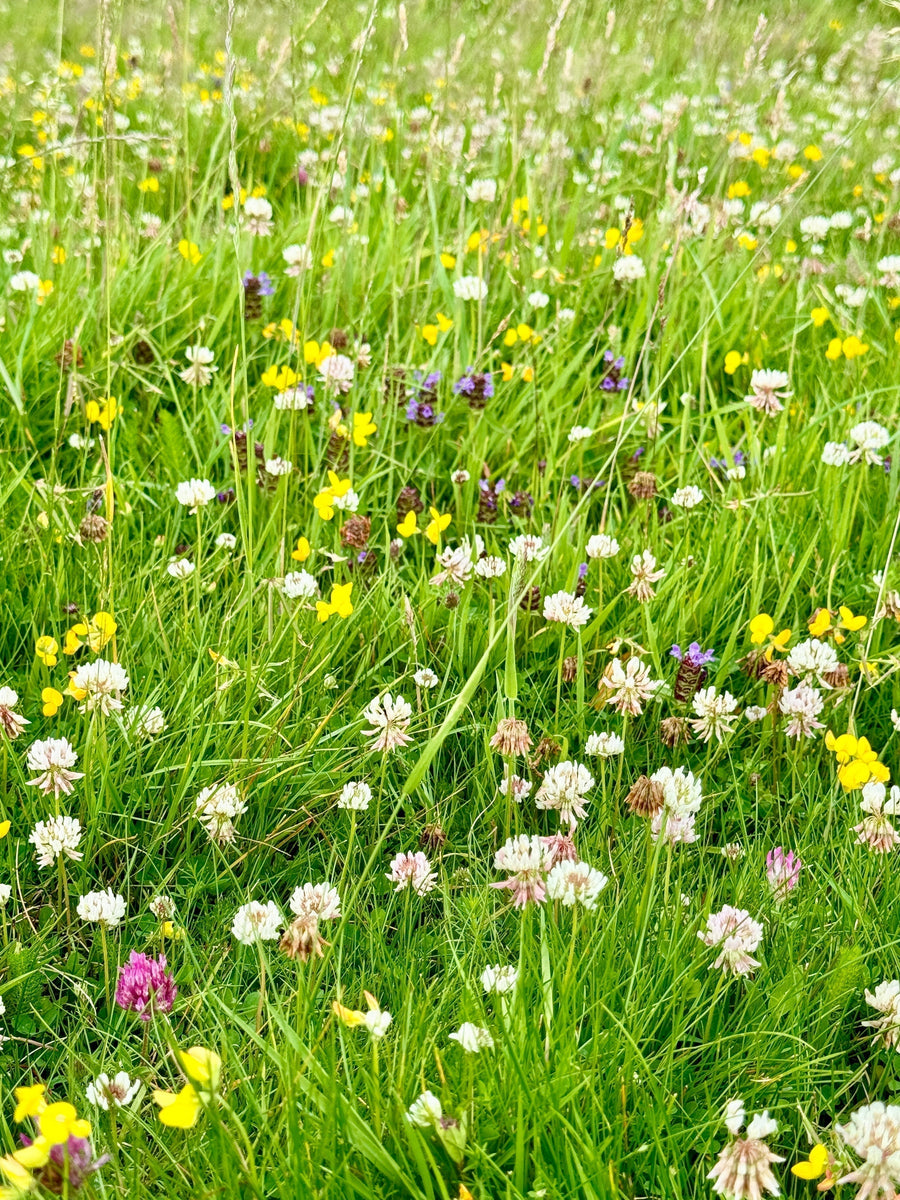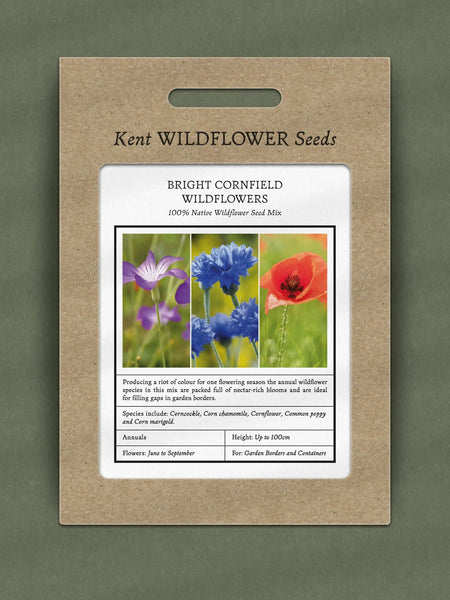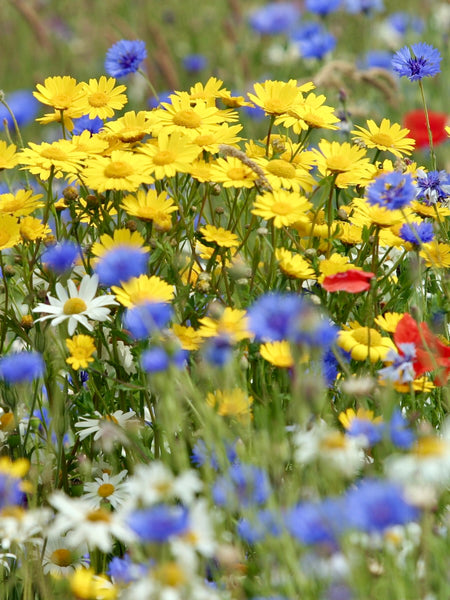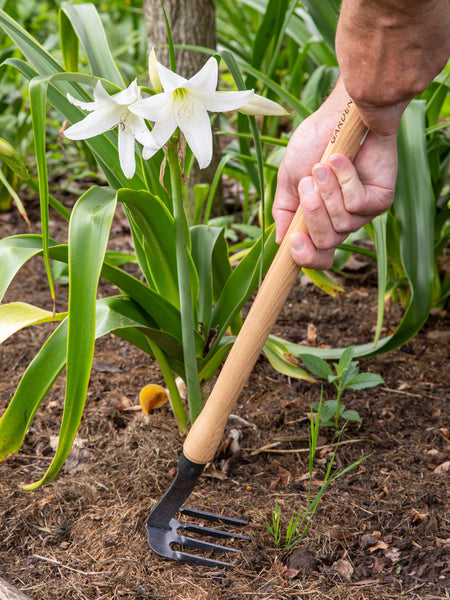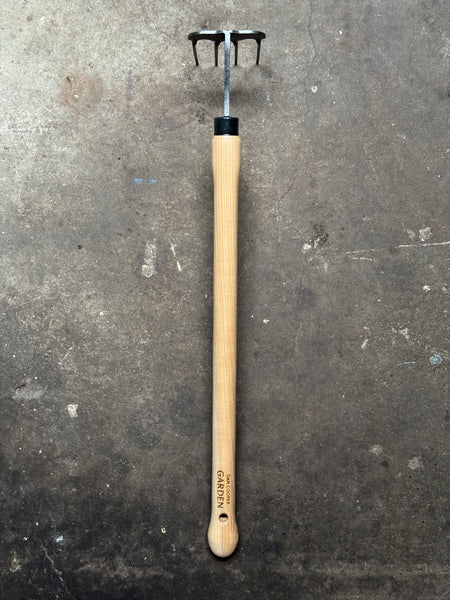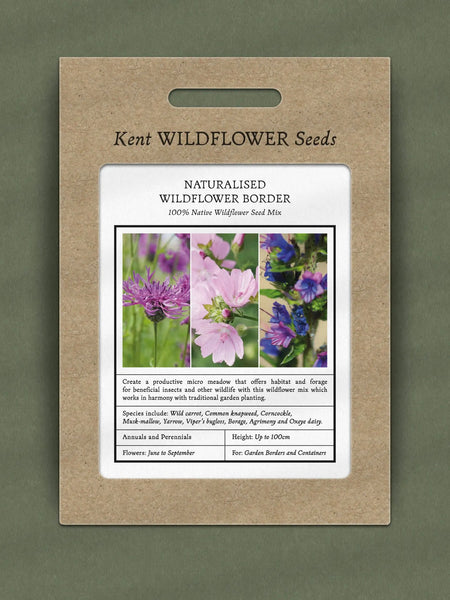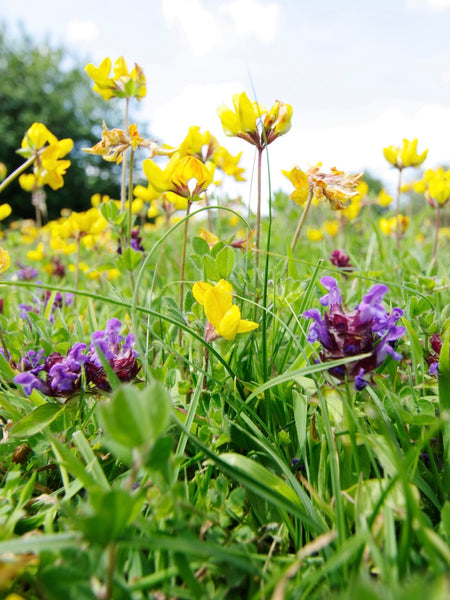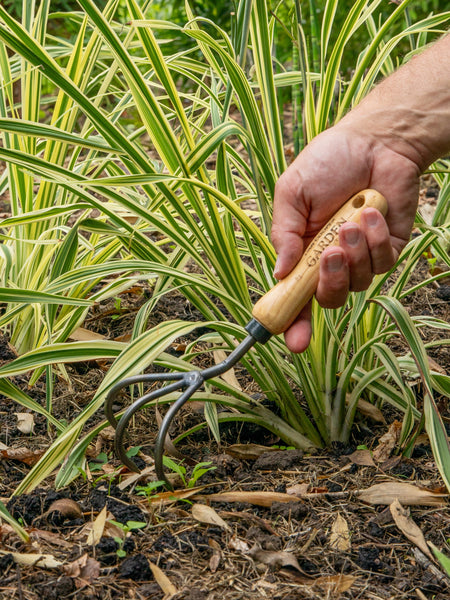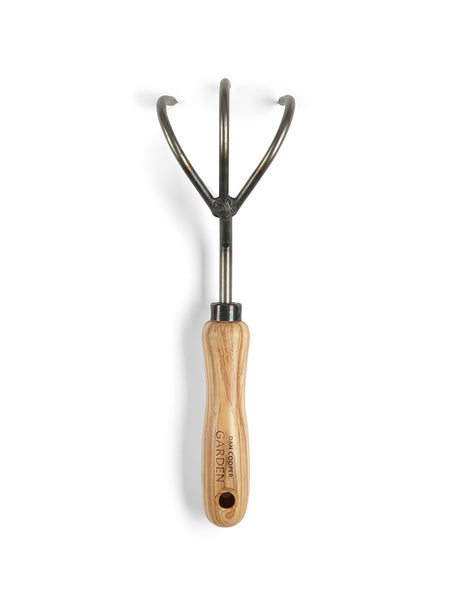Wildflower meadows have been a feature of the British landscape for centuries. Since WWII, we have lost almost 97% of them, making those that remain a resource worth cherishing, restoring and replicating. A complex mix of flowering plants and grasses, wildflower meadows significantly contribute to our natural environment, providing a haven for wildlife both above and below ground. Wildflower meadows can be either perennial (surviving from one year to the next) or annual (lasting for one growing season), or a mixture of the two. Whether they are ancient or modern, in it for the long haul or just planted for a brief blaze of glory, wildflower meadows evoke wonderful feelings of freedom, simplicity, hope and even romance.
Annual Meadows
Annual wildflowers germinate, bloom and set seed in the same year. Popular varieties include cornflower, corn cockle, corn poppy, and corn marigold, which are commonly found in regularly cultivated fields - hence the repeated references to corn. Because annual plants die after flowering, they need to be reseeded each year or mixed with perennial wildflowers for a continuous display. If the plants are allowed to set seed, they may self-sow and regerminate the following year; however, one or two species may end up dominant, while others may fade away altogether.
Planting an annual flower meadow is a quick, easy and fun way to fill a vacant space with colour. It’s the perfect solution if you’ve just moved into a new home and haven’t made long-term plans, or if you have a lot of space to fill with colour quickly. Rather than leave the ground bare and invite weeds to move in, you can sow a wildflower mix in spring and spend the next six months enjoying a carpet of bright flowers and textural foliage. What’s more, you’ll be helping to provide food for a host of pollinating insects, including bees and butterflies, and later seeds for garden birds. In a garden setting, it is perfectly acceptable to mix native wildflowers with non-natives, such as Cosmos, Coreopsis, Nigella, and Ammi, to create an enhanced version of a natural meadow.

Perennial Meadows
Perennial meadows can also be grown from seed or started from plugs plants. Although many species will bloom in the first year, others may take some time to reach flowering size. Popular perennials in UK meadows are oxeye daisies, red campions, meadow cranesbill, primroses and cowslips.
Like a fine wine, perennial meadows will mature and change over time. If you strike the balance right, you'll create a constantly evolving tapestry of flowers, which you can supplement with bulbs such as Narcissi and Camassias. Established perennial meadows can become havens for rare wildflowers that prefer not to be disturbed, such as orchids and snake's head fritillaries. Occasional intervention will be necessary to prevent invasive plants, such as grasses, brambles, and tree saplings, from taking over. Keep in mind that meadows are man-made habitats, so in a garden you will need to step in to do the work that farmers, grazing animals and birds might do in the wider countryside.

When and Where to Sow
An open, sunny location that is not overshadowed by trees or buildings is best for most wildflower meadows. If sown in shade, growth will occur, but can be patchy unless you have chosen a seed mix that's suited to shady conditions. Most wildflowers will happily grow in poor to average, well-draining garden soil and do not generally require frequent feeding, watering, and cosseting. If your soil is especially rich, it can be worth removing the top few centimetres to reduce its fertility, thereby discouraging greedy feeders like nettles, which will take over. Introducing yellow rattle into areas of coarse or rank grass should reduce its vigour over time. If you garden on heavy clay or chalk, there are wildflower seed mixes formulated specially to flourish in these conditions.
Whatever scale you are working on, it is essential to create a clean seedbed before sowing. This means removing all visible weeds and weed roots, especially grass and perennial weeds such as ground elder, bindweed and couch grass. It is a waste of time scattering wildflower seeds into existing grass or other vegetation, as the seedlings won’t be able to compete with the established sward.
Once the ground is weed-free, you should gently cultivate the surface to create a seedbed. I use my Signature 4 tine cultivator or claw cultivator for this task. Many wildflowers require regular disturbance to gain an advantage over other species. You should rake the surface of the soil, removing large stones and breaking up clods of earth, until you achieve a level surface and a soil texture that resembles breadcrumbs. Bare soil is also a magnet for weed seeds, so be sure to get your wildflower seeds sown without delay. If the soil feels warm and moist in your bare hands, then it’s perfect for sowing.
Starting in March, April, or May gives you the most reliable results. Successful meadows can still be achieved by sowing before the summer solstice, but you should expect a later flowering season, and the seeds are likely to need watering to help them establish. Sowing in autumn, typically in September or October, can result in early flowering and more vigorous plants the following year. However, survival over winter is not guaranteed.

How to Sow Your Seeds
Unless you have a vast area to cover, wildflower seed mixes can be sown successfully by hand at a rate of 2-3g per square metre, which is equivalent to one packet of Kent Wildflower Seeds.
For hand-sowing large areas, it is a good idea to mix your seed with a dry material, such as pale, clean sand, and then divide the entire amount into two or three separate containers. Take one portion of the mixed seeds and scatter them evenly over the whole area. Then take the next portion and repeat the process, walking in a different direction. This helps to ensure the seeds are evenly distributed. If this is the first time you have sown wildflower seeds, then the last portion will allow you to fill any obvious gaps.
The seed must be firmly pressed into the seedbed, ensuring close contact with the soil. DO NOT rake the seed into the ground as this will stop species that require light from germinating. Instead, use a roller, the back of a spade, or the end of your rake to firm the seeds into the soil gently.
If you are sowing wildflower seeds in the spring, they should not require watering. However, if it’s late May, early June, or there is a prolonged dry period immediately after sowing, then a couple of thorough soakings may be necessary. Water gently using a watering can with a rose or a hose with a fine spray attachment. Avoid blasting the soil surface with a jet of water or allowing puddles to form, as this may bunch seed together and leave patches bare. A long, gentle watering that gets deep into the ground is best.

Aftercare
In normal spring weather, you should expect to see the first signs of germination within 7-10 days. Growth can be remarkably rapid after that, and flowers may start appearing as soon as 6 weeks later.
If ground preparation was good, weeding should not be required. If you do spy any obvious interlopers, it’s easy to pull them out by hand, avoiding the seedlings you’ve carefully sown.
Native wildflowers should perform well in all weather conditions as they are adapted to the British climate. They’ll be more floriferous if the weather is fine, but periods of wet and even occasionally flooding should not set them back. Should the summer months be especially hot and dry, annual wildflower might complete their lifecycle early, producing flowers and setting seed before dying. If your annual meadow starts to look a little tired, then go over it with a pair of shears, cutting the stems about halfway from the ground. There’s no need to collect up the cuttings unless you want to gather some for indoors. Water thoroughly, and within a few weeks, you should have a fresh flush of foliage and flowers. Avoid cutting perennial meadows until the end of August or early September to allow seeds to ripen and fall to the ground.
Most of the time, you can sit back and enjoy successive waves of colour and texture. Once flowering has ceased, the wildlife benefits of your wildflower meadow will continue. Any remaining seed heads will provide a welcome food source for garden birds. Insects love to nest in dead stems, so if you don’t mind the area looking untidy for a few months, then leave your wildflower meadow alone for as long as possible.
Top Tips
-
Check the measurements of the space you’re sowing before ordering your seed so that there’s no waste or shortfall. A 2/3g packet of seeds should be enough to cover 1 square metre.
-
Sow when the ground has been warmed by the sun and is nicely moist, not when bone dry, waterlogged or if inclement weather is forecast soon afterwards. If in doubt, wait a few days.
-
Don’t be surprised to find that your ‘clean’ soil is full of weed seeds. Common weeds are common because they are extremely successful in surviving in the ground for many years. If possible, only disturb the soil surface when sowing to avoid disturbing dormant weed seeds.
-
Buy yourself a wildlife identification field guide and spend the summer noting down all the species of insects that visit your garden. You’ll be amazed at just how many different ones you attract!
SHOP WILDFLOWER SEEDS
You Might Also Enjoy
- Ten things you don't need to do in your garden
- How to create a drought-tolerant garden
- Being a bee-friendly gardener

